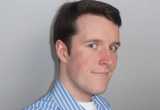 “How many women does it take to change a light bulb?
“How many women does it take to change a light bulb?
One, but she may need to get a ladder or stand on a chair first.”
As a straight white male, I am, as writer John Scalzi puts it, playing life on easy mode. I don’t have to look for long to see how much more difficult this great game can be. Here are just a few glimpses of what life can be like as a woman in 2014.
In Nigeria, the militant group Boko Haram kidnapped more than 200 girls from their school last month. Nigerian women began the hashtag #BringBackOurGirls to raise the issue in the West, but I’m not sure that David Cameron holding it up on a sign on Sunday morning television is quite the result they were going for.
In more positive news, Conchita Wurst, a beautiful lady with a beautiful beard, won Eurovision last weekend. I’m not sure where her boat sits on the high seas of gender fluidity, but her win on Saturday has been hailed as a victory of tolerance over prejudice. (Confession: I don’t watch Eurovision but Twitter keeps me reliably half informed on all things).
In a medical turn, the High Court ruled last week that the NHS does not have to provide free abortions to women from Northern Ireland who come to the mainland for the procedure. Due to the tangles in the 1967 Abortion Act, abortion is illegal in Northern Ireland. This had led to many women seeking the procedure in England instead, but it seems our comprehensive health service will not stretch to cover them.
It was against this background that on Monday 12 May, I attended a conference on women’s health and human rights at BMA House, London. Professor Lesley Regan provided an insightful look into the state of obstetrics and gynaecology around the world today. It’s getting better but there is still work to do.
Maternal mortality rates have dropped in the past two decades, but still fall far short of the Millennium Development Goal target of reducing the ratio by 75% between 1990 and 2015. There are also shocking differences between countries. Maternal mortality occurs in one in 17 400 pregnancies in Sweden, but in Chad the rate is a terrifying one in eight. Maternal health tends to reflect the status of women in society, their level of empowerment, and their ability to make their own choices. Each year, 200 million women worldwide will become pregnant. Of these, 50 million will seek a termination. And of these, 20 million will be unsafe as stigma, religion, and law drive women away from medical care.
Regan finished with a quote from Hillary Clinton—that human rights are women’s rights and women’s right are human rights. This led on nicely to Julian Sheather’s percolation of medical ethics and human rights. He boiled down the nebulous and sometimes confusing spheres to the same basic principle. At the core of both is a fundamental respect for the person—everything else grows from that.
FIGO, the International Federation of Gynaecology and Obstetrics, has designed a human rights based curriculum of women’s health for medical students. This highlights and contextualises the undeniable and universal human rights for women’s health, such as:
- EVERYONE has the right to health, to the highest attainable standard.
- EVERYONE has the right to privacy, to sensitive examination with appropriate chaperoning.
- EVERYONE has a right to autonomy, to make decisions about their own health and body.
- EVERYONE has a right to determine their family, the number, and spacing of their children. Everyone has a right to have access to the information, education, and means to exercise these decisions.
If I can exercise these rights but there are women who can’t, then that is a problem. As a straight white male playing life on easy mode, it can be easy to dismiss obstetrics and gynaecology as just “women’s issues” that do not concern me. But as John Donne put it: “No man is an island, entire of itself. Every man is a piece of the continent, a part of the main.” (I’m a sucker for John Donne). There are no “women’s issues.” There are only “human issues” and they concern me. They concern all of us.
Rhys Davies is a final year medical student at Imperial College London. He is currently working as a Clegg Scholar in The BMJ offices.
